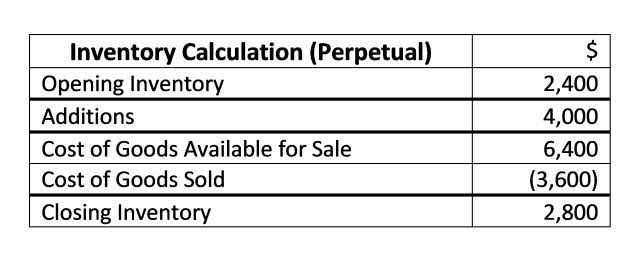Cash Conversion Cycle CCC Formula, Example, Analysis
![]()
The total cash conversion cycle is 6.45 days from Walmart making a cash investment in its inventory until it receives the cash from the sale. Walmart has a very short period of time in which it collects cash from credit sales. Its days in inventory outstanding and days payables outstanding are very similar. Overall, it has a very low CCC and indicates that Walmart is efficiently managing its inventory and sales processes. The cash conversion cycle measures the amount of time it takes for a business to convert its cash investments in raw materials or inventory into cash from product sales.
Treasury Management Solutions

Where that’s the case, the cash conversion cycle will represent how many days before paying its suppliers the business is receiving payment from its customers. This can result in a CCC of -X days.This is most common with highly efficient e-commerce businesses with high product turnover rates, and especially those that make use of drop shipping. Drop shipping is an inventory management strategy that reduces the burden of carrying inventory on the seller business to zero. Instead of being stored by https://www.bookstime.com/articles/how-much-does-bookkeeping-cost the retailer, drop shipped products and shipped directly from manufacturer to customer.

What Is a Good Cash Conversion Cycle?
Another benefit is that it may be able to negotiate better terms with its suppliers. If a company sells products that people are looking for, cash cycles go faster. For example, when a huge excess of inventory builds up, money gets stuck in items that could not be sold. DPO4 is the company’s payment of its bills or AP, calculated by dividing the average AP by the daily COGS. Extending the DPO means allowing cash to stay longer with the company, thereby boosting its investment potential. You can express a company’s operational and management efficiency through different metrics, including CCC.

Date and Time Calculators
As a result, maintaining an appropriate DIO supports better cash flow management and contributes to overall business profitability. However, you also need to be aware of the potential risks and challenges of reducing your CCC. For example, you may face inventory shortages, customer dissatisfaction, or supplier conflicts if you overdo it. You also need to balance your CCC cash conversion cycle with other financial metrics and goals, such as profitability, growth, and customer satisfaction. You can do this by offering discounts or incentives for early payments, enforcing strict credit policies and terms, sending invoices and reminders promptly, or using factoring or invoice financing services.
- Implementing cash flow forecasting is vital for businesses looking to enhance their Cash Conversion Cycle.
- However, how quickly inventory is sold depends significantly on external factors such as consumer demand and market competition, which businesses need to navigate deftly.
- A lower CCC means that the business can generate cash faster and use it for other purposes, such as investing, paying dividends, or reducing debt.
- It is the number of days it takes for a business to process raw materials and its inventory and receive payment for a sale.
- Versapay’s Accounts Receivable Efficiency Suite simplifies the invoice-to-cash process by automating invoicing, facilitating B2B payments, and streamlining cash application.
- It plays a significant role in assessing a company’s operational efficiency and financial health.
These metrics illustrate the efficiency of your inventory management, customer collections, and payment to suppliers. The significance of the Cash Conversion Cycle lies in its ability to highlight how efficiently your business converts its investments into cash flow. A shorter cycle indicates better cash flow management, allowing you to reinvest in operations, fulfill obligations, or pursue new opportunities. Conversely, a longer cycle could signal potential liquidity issues that require your attention.
This metric assesses how long invested funds are committed to the production and sales processes. A CCC with a short time enables a business to function with a minor initial cash input. Days Inventory Outstanding (DIO) measures the average number of days a company holds inventory before selling it. A lower DIO indicates that a company sells its inventory more quickly, which is generally positive as it implies faster cash flow. In today’s fast-paced business environment, where cash flow is king, mastering the Cash Conversion Cycle is not just a financial exercise—it’s a strategic imperative. Companies that successfully optimize their CCC can enjoy improved financial health, greater operational flexibility, and enhanced ability to invest in growth opportunities.
- This measures the average number of days a company takes to sell its inventory.
- The cycle is also closely monitored in smaller organizations that have minimal amounts of equity financing or debt financing.
- Also, implementing an efficient system of invoicing, bill collection, and follow-ups can make a significant difference.
- The calculations are straightforward if you have the companies’ financial statements from the past several years.
To complete these calculations, you’ll need to have access to beginning and ending balance sheets and income statements for the period that you’re calculating. Whether you earn $50,000 or $50 million in revenue annually, knowing and understanding financial metrics can help you make better business decisions. Better decision-making for your business starts with adequately measuring financial performance.
- This involves selling inventory faster, collecting payments sooner, and extending bill payment periods.
- In this manner, the suppliers are technically financing the company’s operations.
- In contrast, a shorter cash conversion cycle suggests a more effective working capital management.
- Therefore a lower figure is preferable, though businesses must always consider this in context.
What is a good cash conversion cycle?
This means that the business should try to minimize the amount of time it takes to sell its inventory. This can be done by improving the demand forecasting, optimizing the production planning, implementing just-in-time inventory management, reducing the inventory levels, and increasing the inventory turnover. For example, a company that sells seasonal products may reduce its inventory days by ordering less stock during the off-season and more stock during the peak season.
Can the cash conversion cycle be negative?
Each one of these separate calculations offers important insight into your business operations and how efficiently you’re using your working capital. This means the company takes approximately 64 days to pay its invoices from vendors. It is accounting essential to understand that a firm’s cash conversion cycle does not exist in a vacuum because it reflects how it interacts with its consumers and suppliers.

